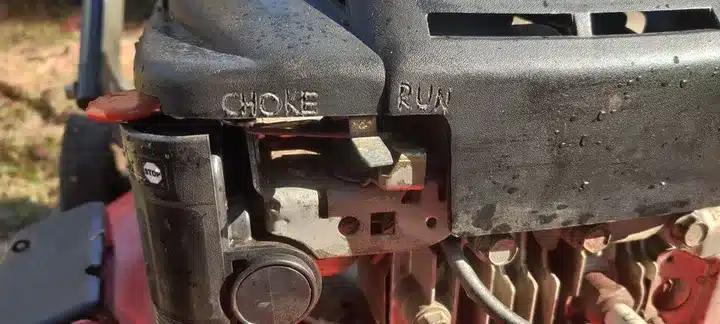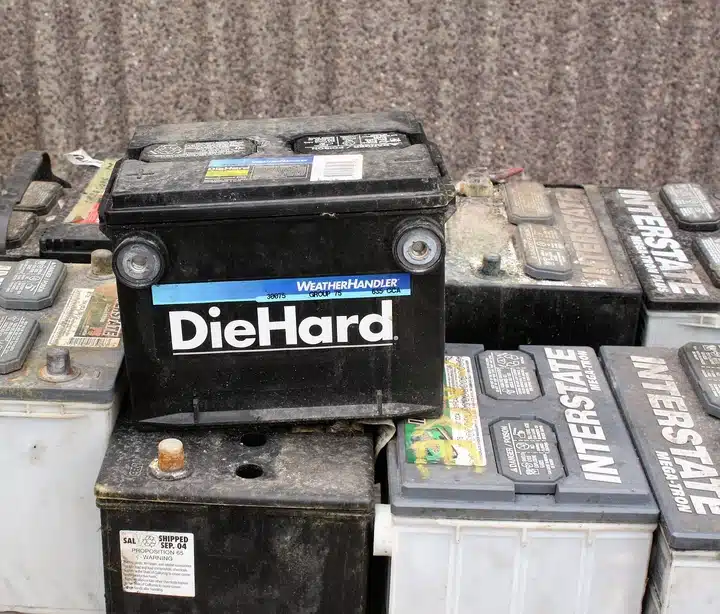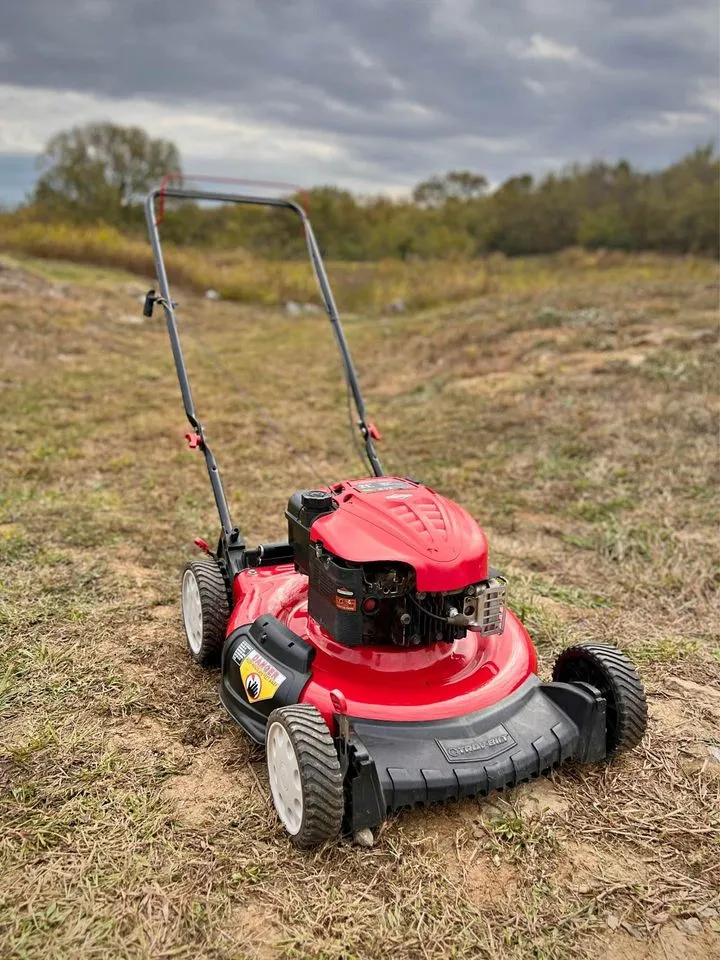Diagnosing a stubborn push mower that refuses to start can be frustrating, but with the right approach, it’s a solvable issue.
As an experienced lawn care expert with extensive knowledge in small engine repair, I’ve encountered and resolved countless cases of mowers failing to spring into action.
In this blog post, we’ll dive straight into the common causes of starting problems—from spark plug issues to carburetor complications—and provide practical solutions to get your mower running smoothly again.
Trust in my expertise, and together we’ll uncover the steps to troubleshoot and fix your push mower with efficiency.
Keep reading to transform your mower from dormant to dynamic with guidance from a seasoned professional.
Quick Summary
- Successfully starting a push mower often involves ensuring the machine has fresh fuel, a clean spark plug, and unobstructed air flow.
- Checking the battery is a key step for push mowers equipped with electric start capabilities to avoid start-up issues.
- Statistically, a significant percentage of push mower problems are due to neglecting regular maintenance such as cleaning or replacing air filters.
- In my opinion, consistent upkeep and familiarizing oneself with the mower’s manual can prevent most starting problems and extend the equipment’s life.
Common Reasons for Starting Issues
When your push mower refuses to start, it’s often due to a handful of typical issues ranging from fuel problems to faulty spark plugs.
I’ve learned that one of the first things to check is the ignition switch. If it’s malfunctioning or not engaged properly, the engine won’t fire up.
I also make sure to check the mower’s safety features. These are designed to prevent the mower from starting unless certain conditions are met, like the handle being held down.
Fuel Problems
Now let’s examine how fuel issues can prevent your push mower from starting.
If I’ve left fuel sitting in the mower for too long, it can become stale and gum up the works.
Clogged fuel lines or a finicky carburetor are also common culprits that I’ll need to check.
Read More: Bad Boy Fuel Gauge Not Working
Stale Fuel
Stale fuel is a common culprit behind a push mower’s reluctance to start, as gasoline can degrade and lose its combustibility over time. I’ve learned that gasoline’s shelf life isn’t indefinite.
In fact, with ethanol in the mix, the risk of damage from moisture absorption and separation increases. I’ve faced this issue myself, especially after leaving fuel in the tank during off-season storage.
To combat this, I’ve started using fuel additives and embracing seasonal maintenance routines. Adding a fuel stabilizer has shown tremendous benefits, preserving the fuel’s integrity and preventing the carburetor issues associated with ethanol damage.
It’s a simple step that saves me a lot of trouble when it’s time to get the mower running again after a long winter break.
Clogged Fuel Lines
Another common issue that can prevent a push mower from starting is a clogged fuel line, which obstructs the smooth flow of gasoline to the engine.
Clogged lines are often caused by rubber degradation or ethanol damage. Ethanol in gasoline can corrode the fuel system, leading to clogs.
I’ve learned that regular filter maintenance is crucial to prevent these blockages. If I neglect it, debris can accumulate and choke off the fuel supply.
I also use fuel additives to help keep the lines clean, but sometimes that’s not enough. When the lines are beyond maintenance, I don’t hesitate to go for a line replacement.
It’s better to replace a clogged line than to deal with the frustration of a mower that won’t start.
Impact of Ethanol-Free Gasoline
Ethanol, commonly added to gasoline, can be detrimental to small engines like those in push mowers. This is due to ethanol’s tendency to attract moisture and form deposits that can clog the fuel system.
Using ethanol-free gasoline can significantly reduce these risks, leading to better engine performance and longevity.
Ethanol-free gas, often labeled as E0, provides a cleaner burn and reduces the likelihood of fuel system issues, making it a preferred choice for many mower owners.
Highlighting the benefits of ethanol-free gasoline could help readers make informed decisions about fuel selection to enhance mower performance and reduce maintenance hassles.
Issues with the Carburetor

Moving on to the carburetor, I’ve found that a dirty or malfunctioning one is often the culprit behind fuel problems that keep my push mower from starting.
A gummed-up carburetor can prevent the engine from getting the right air-fuel mixture, making it impossible to start. When I face such issues, a carburetor rebuild is usually in order.
This process involves cleaning or replacing components like the float needle, which can stick and cause fuel flow issues.
I’ve also learned the importance of the idle adjustment; if it’s off, the engine might stall or not start at all. The primer bulb, essential for starting a cold engine, can become brittle and ineffective over time.
And lastly, a faulty choke mechanism might prevent the engine from starting, especially when it’s cold.
Related: How to Clean Carburetor on Push Mower
Spark Plug Issues
Now, let’s talk about another common culprit when my push mower won’t start: spark plug issues.
Dirty or Faulty Spark Plugs
Dirty or faulty spark plugs often lie at the heart of a push mower’s refusal to roar to life. If the spark gap isn’t set correctly, it can mess with the ignition timing, causing starting troubles.
I’ve learned that regular plug maintenance is key to preventing this. Over time, the electrode can corrode, disrupting the necessary spark to ignite the fuel.
It’s not just about cleanliness; the thermal properties of the plugs must match my mower’s engine requirements. If they don’t, it can lead to overheating or underheating, which affects performance.
I make sure to check my spark plugs periodically, cleaning any build-up and replacing them if I spot any damage. It’s a simple step that can save me from a lot of frustration.
Air Flow Problems
A clogged air filter is often to blame, as it strangles the engine’s ability to breathe properly.
I’ll need to check the filter for debris that could be obstructing the flow of air.
Clogged Air Filters Leading to Poor Engine Breathing
A clogged air filter can choke a lawn mower’s engine, preventing it from drawing the necessary air for combustion.
It’s a common issue that I’ve found can be easily overlooked. Proper engine maintenance is essential, and that includes regular servicing of the air filter.
If there’s a ventilation obstruction, the engine won’t perform as it should; it’s like trying to run with a stuffy nose – you just can’t get enough air. I’ve learned that filter replacement is a simple yet crucial part of performance tuning for any push mower.
By ensuring the air filter is clean, I’m preventing a slew of potential issues that could keep my mower from starting.
It’s a small step that makes a big difference in keeping my lawn care routine running smoothly.
Battery Issues (for electric start mowers)

If I’ve been charging my mower but it still won’t start, I might be dealing with a dead or poorly charged battery.
It’s essential to check the battery’s condition and ensure it’s receiving power as it should.
Dead or Poorly Charged Batteries
One common culprit behind an electric start push mower’s refusal to fire up is a dead or undercharged battery. I’ve learned that diligent battery maintenance is crucial to keep my mower ready to go.
Regular charging tips include keeping the battery connected to a power source when it’s not in use, especially during the off-season. This practice significantly extends the battery lifespan.
Before I try to start my mower, I always perform a quick voltage check to ensure the battery has enough juice. If it’s below the recommended level, I know it’s time for a charge.
Understanding these simple aspects of battery care helps me avoid the frustration of a mower that just won’t start.
Mechanical Problems
Moving beyond electrical issues, I’ve found that mechanical hiccups can be just as frustrating when my push mower refuses to start.
Starter Rope Problems
A jammed or frayed starter rope can thwart your efforts to bring a push mower’s engine to life. I’ve experienced the frustration first-hand when rope fraying made pulling the cord nearly impossible.
It’s not just the rope that can cause trouble; pulley damage within the recoil mechanism can also prevent a smooth start. And let’s not forget about handle issues, which can make it awkward to get a firm grip and pull with the necessary force.
I’ve learned that tension adjustment is key. If the rope doesn’t retract properly or has too much slack, starting the engine becomes a battle.
Regular maintenance is critical to prevent these starter rope problems – a lesson I’ve certainly taken to heart to keep my push mower ready for action.
Environmental Factors
Now, I’m turning my attention to how environmental factors like improper storage and temperature can impact its operation.
It’s possible that where and how I’ve kept my mower could be the culprit behind these starting troubles.
Improper Storage
When it comes to maintaining the functionality of your push mower, especially during extended periods of inactivity like winter months, understanding proper storage is crucial.
Improper storage, such as leaving your mower in a damp or unsheltered environment, can lead to a multitude of issues that hinder its ability to start.
Winter condensation, for example, causes moisture buildup inside the engine and fuel system, while the cold thickens oil viscosity, making the engine harder to crank.
Moreover, pest infestations can occur when mowers are stored in cozy, undisturbed spots, leading to damaged wires and clogged mechanisms.
Additionally, exposure to the elements can cause rubber degradation and corrosion buildup, with belts and hoses cracking and metal parts rusting.
To prevent these issues, proper storage techniques for long-term mower inactivity are essential. This includes draining the fuel or adding a fuel stabilizer to prevent gasoline degradation, which can clog carburetors and fuel lines.
It’s also important to clean the mower thoroughly to remove grass and debris, lubricate moving parts, and store the mower in a dry, sheltered place to prevent rust and corrosion.
By following these detailed storage tips, you can ensure your push mower remains in optimal condition, ready to spring into action when the mowing season returns.
Temperature Effects
Temperature swings and environmental factors play a pivotal role in the performance of push mowers, particularly when it comes to starting issues. Cold weather, in particular, poses a significant challenge.
In my extensive experience with garden equipment, I’ve observed that frost impact goes beyond a mere layer of ice; it can cause small metal parts in a push mower to undergo thermal contraction, affecting both fit and functionality.
Moreover, condensation issues often arise with temperature inconsistency.
For example, when moving a mower from a warm shed to the chilly outdoors, condensation can form inside the fuel tank or carburetor, leading to poor performance or a refusal to start.
This highlights the importance of maintaining a consistent temperature or adequately warming up the mower to prevent such issues.
Additionally, environmental and seasonal changes, such as high humidity and cold weather, can lead to moisture in the fuel system and thicker oil, making the engine harder to turn over.
Temperature variations can also cause expansion and contraction in engine components, potentially leading to starting difficulties. To combat these issues, adapting mower maintenance to different environmental conditions is crucial.
This includes using the correct oil grade for the season and ensuring the fuel is protected from moisture.
By understanding and adjusting to these environmental and seasonal considerations, you can significantly enhance the starting and running performance of your push mower, ensuring its reliability regardless of the weather conditions.
Effect of Altitude on Mower Performance

At higher altitudes, the reduced air pressure can impact the air-fuel mixture in your push mower’s engine, often leading to starting difficulties or poor engine performance. This happens because the thinner air results in less oxygen available for combustion.
To compensate, adjustments to the carburetor might be necessary to enrich the fuel mixture. This ensures that the engine receives an optimal balance of fuel and air despite the reduced oxygen levels.
It’s crucial for those living in high-altitude areas to be aware of this and consider consulting the mower’s manual or a professional for appropriate adjustments.
Detailed Troubleshooting for Electric Start Mowers
For electric start push mowers, starting issues often revolve around the battery and electrical connections.
A detailed troubleshooting guide could include checking the battery’s charge level, ensuring connections are clean and secure, and verifying the integrity of the starter motor and solenoid.
Additionally, checking for blown fuses or tripped circuit breakers can be crucial.
Offering readers a step-by-step approach to diagnosing and resolving electric start issues can save them time and potential repair costs, especially considering the unique challenges presented by electric start mechanisms in mowers.
Our Verdict
In wrapping up, I’ve discovered through my own experiences and challenges that solving a push mower’s stubborn refusal to start often comes down to tackling the basics.
Regular checks of fuel, spark plugs, and air flow, not to mention a quick battery inspection for electric start models, can make a world of difference. It’s surprising how often the solution lies in these simple areas.
I’ve personally faced these issues and, over time, learned the value of routine maintenance and being aware of how environmental factors like storage and temperature changes can impact performance.
So, here’s to facing these little hiccups head-on, armed with the knowledge and confidence to get our trusty push mowers up and running again!
Frequently Asked Questions
How can seasonal changes affect the performance of my push mower’s starting mechanism?
Seasonal shifts can wreak havoc on my mower, with temperature fluctuations impacting fuel consistency, oil viscosity, and spark plug health, not to mention the carburetor’s condition, all crucial for a smooth start.
Could a lawn mower’s age or frequency of use contribute to starting difficulties?
Certainly, engine wear, spark plug condition, fuel quality, a dirty air filter, and compression issues can all impact my mower’s start-up performance, especially as it gets older or with frequent use.
Are there specific maintenance routines that can prevent starting issues from occurring?
I maintain my mower by regularly checking the fuel, cleaning the spark plug, replacing the air filter, monitoring the oil level, and cleaning the carburetor to prevent any starting issues.
How do I safely dispose of old fuel that may have been sitting in my push mower over the off-season?
I’m disposing of old fuel by checking local regulations for fuel recycling to ensure environmental protection. I’ll find a hazardous waste center for safe storage and disposal of my mower’s stale gasoline.
Can Modifications or Aftermarket Parts Impact the Reliability of My Push Mower’s Startup Process?
I’ve learned that adding aftermarket parts can affect my mower’s reliability. Engine compatibility issues, electrical upgrades, and ignition system retrofits, if not done right, may hinder performance tuning and airflow optimization during startup.


